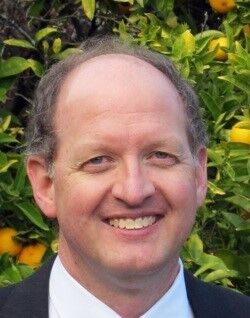In the May 22nd edition of the Press Banner, my colleague, Katie Evans, authored a piece regarding the LIRA (Low Income Residential Assistance) program being offered by the San Lorenzo Valley Water District (SLVWD). Katie reached out to Jim Mosher from Friends of the SLVWD to get more information on the program, and wrote extensively on the push for a 5% rate increase for customers. In response, SLVWD Director Bob Fultz requested a chat; having been on the board for 1.5 years, served on district committees and been an involved resident for many years, he seemed like a good bet on getting a different view of things.
“Make no mistake, these views are solely mine,” Fultz told me. “I have no authority to speak on behalf of the district.” With that understanding out of the way, we moved onto the meat of the topic.
Fultz acknowledge the Friends’ desire for the 5% rate increase, but wanted to clarify its intended use. “100% of that rate hike will go to increased operating expenses, which is the cost of running the district,” he told me. Currently, the district has several pressing financial issues regarding infrastructure and pensions, and none of those items would be addressed by the increase. “We have serious issues, like the need for coating the tanks, building up our reserves and installing new meters,”
Fultz told me. In short, applying a rate increase would leave the district “running in place,” instead of getting ahead of the financial issues at hand. While Fultz acknowledged Mosher’s statement in the original article that “ten members called in to support the rate increase,” Fultz stated that the callers were all supporters of Mosher. Those ten people, Fultz said, did not represent the majority of rate payers in the valley.
So why would a rate increase of 5% be such a contentious issue? “Well, we need to focus on our budget,” Fultz said. “We’re not a wealthy area by any means, and our no-growth policy negatively impacts the districts finances.” Towns like Saratoga and Scotts Valley are seeing building booms, which equates to fat district coffers. “A water access fee for new residences can be anywhere from $10k-$14k. Granted, that’s a one-time payment, but when you’ve got townhomes being built in rapid succession in Scotts Valley, they’re bringing in substantial revenue from that growth. The San Lorenzo Valley gets just a few new houses each year, so the rate increase needs to be balanced on the backs of existing residents.”
The district’s capital reserves were reduced by 50% in this year’s budget, from $1m to $500k. If you assume that the replacement value of infrastructure is $1.5m to $2m, Fultz told me, “that means we need to spend $3m to $4m every year. We’re in a tough situation,” he said, “and it’s important that we get information out to the public regarding the position the district is in.”
Did the district not see this coming? According to Fultz, the district is operating in a year-to-year budgeting cycle, which, for an agency that has to be looking decades down the road, doesn’t reflect the long-range planning that is needed. From that planning, clarity will come to demonstrate where the district is financially, and what to do about liabilities that have been built up. Pensions for employees seems to be a pressing issue. “The district’s pension liability is based on a decision made on the state level 25 years ago that assumed the stock market rush of the 1980s and 1990s would continue forever. Of course, we have had a couple of severe crashes, so that has resulted in unfunded pension liability. But these are promises that we made to our district employees. The initial assumed rate of return on our investments was 7%; in the last 20 years, rates have been around 5%. Our pension liability will go up towards $6m-7m range, but since we aren’t advancing paying down the pension obligation, the state is charging us a 7% fee for unfunded liabilities,” he said. “Who will we entrust in addressing these issues in a forthright fashion? The community needs to be fully briefed on our concerns.”
Can anything be learned from the district’s past actions? “A few years back, the board decided to increase operating expenses by almost $1m, but without figuring out the actual benefit to the community. They just didn’t have concrete benefits to demonstrate. Now,” said Fultz, “the district is dealing with the fallout of that. We’ll get a better perspective if we move towards a multi-year budget.”
The new board members empaneled in the last election have talked about moving to multi-year budgets (3-5 years) with better planning for remaining fund allocation. The current board is mostly comprised of business people, with the exception of Rick Moran who is in education. As Fultz puts it,
installing new meters,”
“By looking down the road, we’ll get a sense of how expenses will be allocated and managed. By increasing operating expenses each year, customers will see what that means over the long term,” and will lead to more strategic decision making, according to Fultz.
And who will those decision makers be? That remains to be seen, says Fultz. There are two seats up for grabs come November, and Fultz thinks this year’s election process may be affected by COVID-19. “Generally, candidates start pulling papers in late July or early August, but we’ll see how the county moves forward with the election process.”
Interested in throwing your hat in the ring? Fultz emphasizes that the commitment to the water district is done for love, not money, as the monthly stipend is low and the expectations high. To learn more, visit the Santa Cruz County Elections Department at www.votescount.com.













